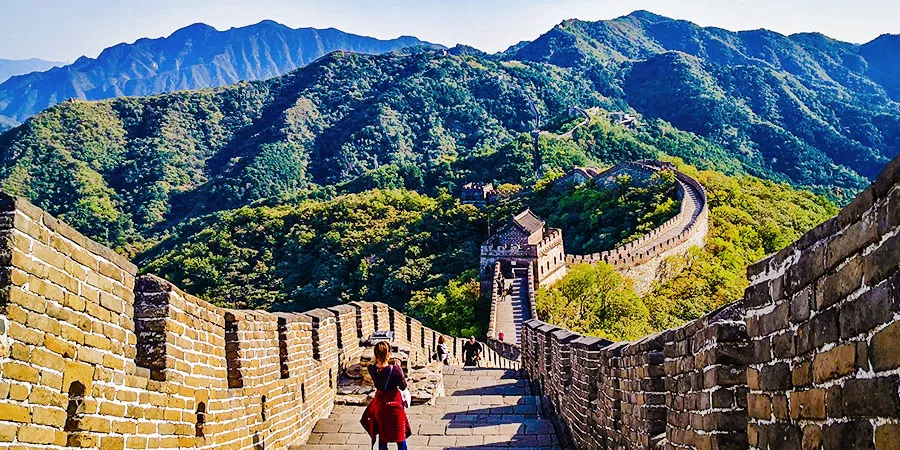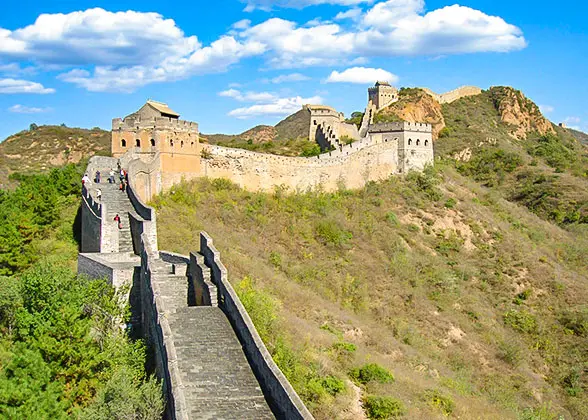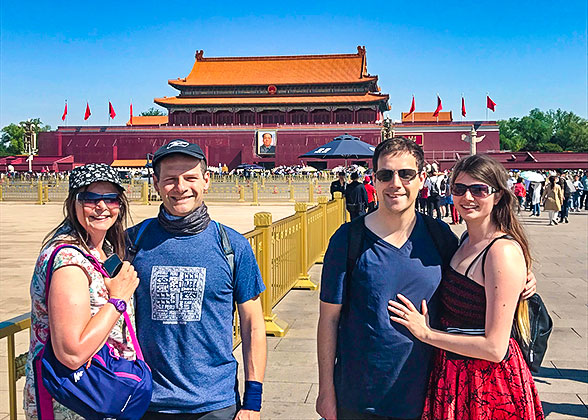Great Wall of China - One of the 7 Wonders of the World
 |
| Great Wall of China |
Why is the Great Wall Considered One of the Seven Wonders of the World?
1. It is a giant ancient military defense project second to none.
The Great Wall of China is a group of fortifications made of stones, bricks, sand, rammed earth, and other materials along mountain ridges, plains, deserts, the Gobi, etc. It is not simply a ‘wall’, but a military defense project consisting of long connective walls, watchtowers, passes, troop barracks and garrison stations. It was constructed mainly for preventing invaders, making it harder for enemies to break the northern border of ancient China.
2. Its construction period lasted 2,500 years.
The earliest Great Wall construction can be traced back to the Western Zhou Dynasty (1046 BC - 771 BC) but the most famous Great Wall was commissioned by China’s first emperor, Qin Shi Huang, during the Qin Dynasty (221 - 207 BC). After that, the rulers of the following dynasties, such as Han (202 BC - 220), Jin (265 - 420), and Ming (1368 - 1644), all intermittently built the wall. The Ming Dynasty is the last dynasty to construct the Great Wall on a large-scale and the remaining sections you can see today are mostly built during that period. But the construction actually lasted till the Qing Dynasty (1644 - 1911).![]() Read more about: How old is the Great Wall of China?
Read more about: How old is the Great Wall of China?
3. It is as long as 21,196 km traversing from east to west China.
According to the latest research, the total length of all sections of the Great Wall of China measures 21,196 km (13,171 mi). Among them, the Ming Great Wall is 8,851.8 km (5,500 mi) long.![]() Read more about:
Read more about:
How long is the Great Wall of China?
Where is the Great Wall of China located?
What are the New 7 Wonders of the World?
The “New 7 Wonders of the World” were selected from a contest held by the non-governmental organization, the New 7 Wonders Foundation. More than 90 million people voted for the top seven wonders among 21 famous UNESCO World Heritage Sites through the internet, phones, and messages. The candidate list includes some well-known landmarks like the Statue of Liberty, Eiffel Tower and Sydney Opera House. It is worth mentioning that the world-famous Great Pyramid of Giza (Pyramid of Khufu), the last remaining site of the “7 Wonders in the Ancient World”, did not participate in the competition. The final result was announced in Lisbon, Portugal and China’s Great Wall became the leader of the “New 7 Wonders of the World”. Here is a complete list:
1. The Great Wall of China
2. Petra, Jordan
3. Christ the Redeemer Statue, Rio de Janeiro, Brazil
4. Machu Picchu, Peru
5. Chichen Itza, Mexico
6. The Colosseum in Rome, Italy
7. The Taj Mahal, India
What are the Seven Wonders of the Medieval World?
As the ancient wonders of the world largely disappeared due to wars, natural disasters, and other factors, scholars redefined the Seven Wonders of the World, adopting broader architectural criteria and technological perspectives. The “Seven Wonders of the Middle Ages” denote the magnificent and significant architectural and engineering feats that emerged during the Middle Ages (500 AD - 1500 AD). They represent the originality, artistry and cultural value of that era. Here is the full list:
 |
| Great Wall of China |
![]() When Did the Great Wall Become Famous?
When Did the Great Wall Become Famous?
![]() Who built the Great Wall of China?
Who built the Great Wall of China?
![]() Which one is better, Badaling or Mutianyu?
Which one is better, Badaling or Mutianyu?
![]() 10 Interesting Figures of the Great Wall
10 Interesting Figures of the Great Wall
![]() Great Wall of China Facts for Kids
Great Wall of China Facts for Kids



